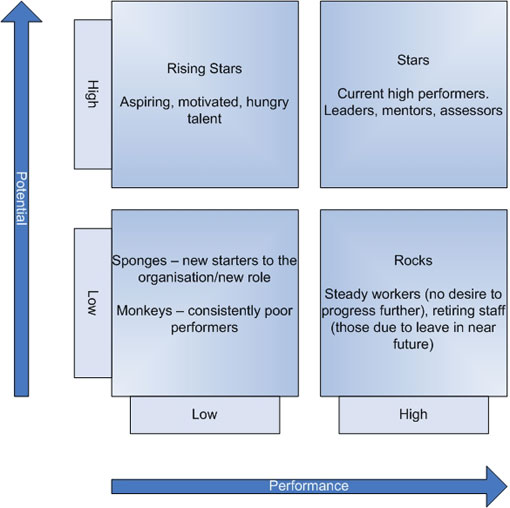According to Contact Babel, some UK regions can employ up to 5% of the local population in contact centres.
With such stiff competition for contact centre staff, how do we ensure that we can develop and retain talent? Carolyn Blunt outlines a blueprint for talent development.
The development and retention of contact centre employees at all levels can be assisted through some of the following strategies, which have been identified through our consultancy work in the industry over the last six years:
1. Induction training and managing the psychological contract
Induction training should be a snappy introduction to the company and its facilities. A hundred slides of history and financials is not going to be retained in the brain of a new starter so this is a waste of resources. There are more engaging ways in which to present information and these should appeal to all learning styles and support principles of accelerated learning.
Induction training is an important time to establish the psychological contract effectively and should be consistent with how the organisation has been ‘sold’ during the recruitment phase.
Breaches of the psychological contract are one of the main reasons for unexplained attrition within the first three months of employment and after a period of major change.
The unwritten rules
Unwritten rules such as being allowed to eat at desks, put coats on the backs of chairs and park cars near the building may sound trivial, but when these ‘perks’ are removed, it can have a negative impact upon employee loyalty and motivation.
Small steps in formalising contact centre practices can be more effective and acceptable to employees than sudden, sweeping changes.
Pay and benefits should be clearly explained during the recruitment process and should be benchmarked against similar roles in the local area.
Early attrition
Disappointment at feeling misled in the area of pay, benefits and role detail can contribute to early attrition.
Allowing potential new starters to have a guided tour of the contact centre environment and staff facilities during the recruitment process can also assist in ensuring a good fit and thus less likelihood of wasting time for both parties.
2. On-the-job training and qualifications
At its worst, this can be on-the-job training consisting of days and days spent listening to colleagues taking calls and watching whilst they navigate at experienced speed through systems.
At best, it can be off-the-job, consisting of experimenting with dummy systems and role-playing calls in a training environment.
The buddy system
The latter is much more effective than the former but still does not negate the ‘nerves’ that will accompany live call taking, and this is where the role of the ‘coach’ or ‘buddy’ can be essential.
In-house trainers and coaches should be carefully selected and professionally developed. Industry-specific and accredited programmes can be helpful for developing coaches and trainers, particularly for smaller contact centres where only minimal formal training or coaching expertise may be present ‘in-house’.
The ‘sideways syndrome’
Other typical pitfalls of ‘on-the-job’ training can include the ‘sideways syndrome’ of collecting bad habits from those sitting nearby and making sideways comparisons when appraising calls.
Monitoring of call quality and feedback by coaches or team leaders to agents can be sporadic, subjective and inconsistent.
To counteract this, call recording software can be used which will filter calls for compliance and highlight training needs, for example with a measurement of ‘must say statements’ or categories set by the contact centre management team.
Those giving feedback (usually coaches or team leaders) should have received training in the appropriate skills and behaviours required to do so effectively and consistently in the agreed company approach.
NVQs
The availability of the National Vocational Qualification (NVQ) scheme to UK contact centre employees can assist in their development by building confidence and identifying training needs.
The qualification works by assessing evidence of candidates’ skills and performance over several months with a variety of different methods against a framework of standards.
Candidates will be required to discuss their work with an assessor, be observed in the work place and submit documentation.
The NVQ can also assist in retention through fostering job satisfaction, and feelings of value and worth, thereby increasing employee loyalty (2Touch, Fujitsu, Capita). Funding for certain age groups can sometimes be acquired and local government business support groups can usually advise.
3. Soft skill development
Essential development and ongoing support in developing advanced skills such as communication, listening, customer service or selling and how to handle difficult calls can be the difference between a poor performing contact centre and a great one.
It is important for the organisation to identify the skills required to make an effective employee and to offer training and development in those key areas.
Callers can generalise the impression of the entire organisation, brand and quality of product or service from their interaction with an agent (1).
Bad habits creep in over time
Even the most experienced agents can slip into bad habits over time so first-time training and refresher training are needed, usually at quarterly intervals.
This training often does not take place, however, because of challenges in releasing people for training and securing cover for calls.
Bite-sized training sessions
There are many creative ways to deliver training: using bite-sized sessions for two hours at a time, working around peak times, holding sessions out of hours and providing a blended approach to learning that incorporates online packages or directed reading.
Good soft skill training can make a huge difference to call quality scores, achievement of service level agreements, customer satisfaction scores and sales.
4. Career management
Every organisation has some distribution of the following people (see diagram below):
- Rising stars – aspiring, motivated, hungry talent
- Stars – current high performers: leaders, mentors, assessors
- Rocks – steady workers (no desire to progress further), retiring staff (those due to leave in the near future)
- Sponges – new starters to the organisation/ new role
- Monkeys – consistently low performers.
The key to success is being able to get the right balance and develop the new starters (‘sponges’) and this aspiring, motivated talent (‘rising stars’) with appropriate development opportunities.
It can make good sense to use ‘stars’ as mentors to pass on tacit knowledge to these groups. Sponges and rising stars require a clear career path so that they have the confidence to move on internally and do not get impatient or disillusioned; at which point they may become consistently poor performers (‘monkeys’) or leave their employer.
It is also critical to continue to satisfy current and established ‘stars’ as these create a huge loss to any organisation if they leave, taking their knowledge and expertise with them.

Categories of Employee Potential & Performance
The performance management process
Career management should be part of the performance management process that provides regular opportunities for the agent to discuss their own career with their manager.
Opportunities need to be made available in the form of further training modules (e.g. coaching skills, team leader skills) and also other methods of skill development such as secondments to other roles or parts of the business, shadowing or mentoring schemes.
Typically, larger organisations will, by their very nature, have more scope to offer such schemes, but in all cases the issue facing the contact centre is how to ‘backfill’ the role.
5. Long-term development programmes and development centres
Usually owned by HR or HRD, long-term development programmes and/or development centres will prepare participants for future roles and guide their development in key areas that will be particular to them.
This opportunity to gain feedback and development from sources other than their team manager is highly valuable: a) for providing a wider viewpoint and b) for reinforcing messages that may have previously been ignored or dismissed.
The long-term development programme will usually include a collective learning experience for a number of participants (ten is often ideal) and will encompass psychometrics, modules of development, 1:1 coaching and project work supported by action learning.
Such programmes are usually based over 12 months and there should be careful and competitive selection for a limited number of places.
The outcomes of such programmes can see bespoke skills developed and loyalty to the organisation fostered. The success of such programmes is greatly enhanced by one constant facilitator or co-ordinator being closely involved in the design and delivery of a high proportion of elements.
These programmes require a considerable investment and are usually found in place at middle and upper managerial levels.
Development centres
The development centre is a one-off event and would be designed to test the skills and competencies required for a future role (e.g. team manager) and may be run by an in-house or external facilitator.
A team of assessors (usually 1 assessor to 2 candidates) would be responsible for observing behaviours and scoring performance along with supporting feedback.
The careful selection and training of assessors is essential to ensure that they are sufficiently experienced and credible themselves and are scoring objectively and consistently and are following the agreed processes.
When handled correctly, the invitation to be an assessor should be readily taken up, even by busy managers, as it would hold kudos.
The feedback and reporting of assessor participation and good performance at senior level meetings can fulfil this.
6. Apprenticeships
Evidence obtained from Capita who run an apprenticeship scheme within their TV Licensing contact centre shows that apprenticeship schemes can be an effective strategy for developing and retaining talent when certain conditions converge.
i) There is a profile of 16-18-year-olds in the local area with few other employment opportunities.
ii) A constant supportive and enthusiastic presence throughout the scheme increases retention of apprentices and assists the integration of apprentices with the rest of the workforce.
iii) Structured training modules and a clear training and progression plan is laid down with monthly reviews of progress.
iv) The commitments required from the apprentices themselves are clearly communicated and performance is effectively managed.
Anecdotal evidence from other apprentices elsewhere supports this idea.
One young lady, who asked to remain anonymous, said: “I am lucky to have a group of managers who appear really enthusiastic about our scheme and the opportunities it will bring. This motivates me.
All the training that I haven’t had to pay for makes me feel lucky. It feels more beneficial than the situation of my contemporaries who are going to be leaving university this year but don’t have a job to go to. As well as learning, I’m gaining experience that graduates who join the company haven’t had.”
This list of strategies is by no means exhaustive and the success of any such strategy will be affected by the leadership capability and employee development practices.
Conclusion

Carolyn Blunt
There are a number of options available to a contact centre that wishes to develop and retain talent.
The selection and blend of these strategies need to be ‘joined-up’, not only with each other but with existing people development and performance management processes.
Such strategies work best when based upon a consistent and positive leadership style that is congruent with the organisation’s culture.
References
1. Dean A. (2002) ‘Service Quality in Call Centres: Implications for Customer Loyalty’ Managing Service Quality V.12 I.6. p414-423
Carolyn Blunt is a contact centre training expert with Real Results Training. If you enjoyed this article you might also like our free resources. Please visit www.real-results.co.uk and see the Members Area. For more information on training your advisers cost effectively, call 0161 408 2003.
Author: Jonty Pearce
Published On: 14th Dec 2011 - Last modified: 15th Aug 2025
Read more about - Customer Service Strategy, Carolyn Blunt, Performance Management, Retention, Service Strategy, Staffing, Training and Coaching









































Hey that was really needful. Thanks for sharing. I’ll surely be looking for more.